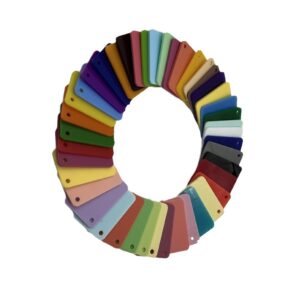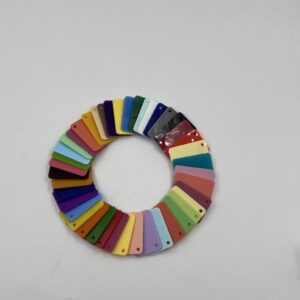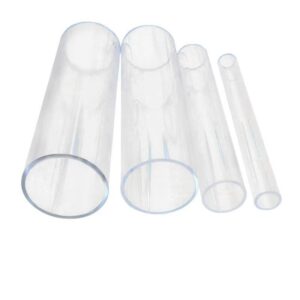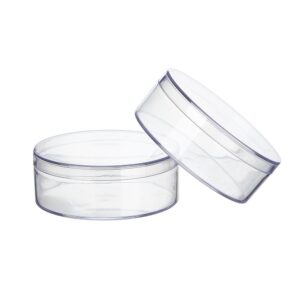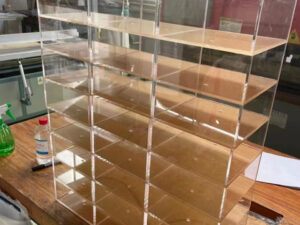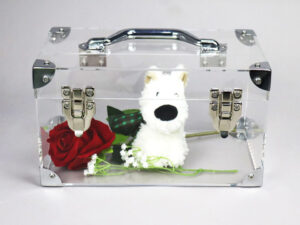Summary
Acrylic sheets, also known as polymethyl methacrylate (PMMA), are versatile plastic materials widely used across various industries due to their exceptional clarity, durability, and ease of fabrication. Available in several types—including cast, extruded, and cell-cast acrylic—these sheets are utilized in applications ranging from signage and architecture to automotive and medical equipment. The choice of acrylic type often depends on specific performance requirements and application contexts, underscoring the material’s adaptability in meeting diverse needs.
Table of Contents
Commonly produced in standard sizes such as 4×8 feet and 4×6 feet, acrylic sheets can also be custom-cut to suit unique project specifications, thereby minimizing waste and enhancing precision for intricate designs. Industry standards, including ASTM and ISO guidelines, ensure the quality, safety, and performance of acrylic sheets across applications, while certifications like NF further guarantee their suitability for sanitary uses. The range of available sizes and thicknesses, alongside industry compliance, reflects the material’s significant role in construction, retail, healthcare, and beyond.
Notably, the production and usage of acrylic sheets are accompanied by discussions regarding environmental sustainability and safety standards. With ongoing advancements in manufacturing processes and growing concerns over material safety, the industry is increasingly focused on enhancing the eco-friendliness of acrylic sheets through improved recycling practices and compliance with environmental regulations. As such, acrylic sheets not only serve practical purposes but also engage in broader conversations about sustainability in manufacturing and material use.
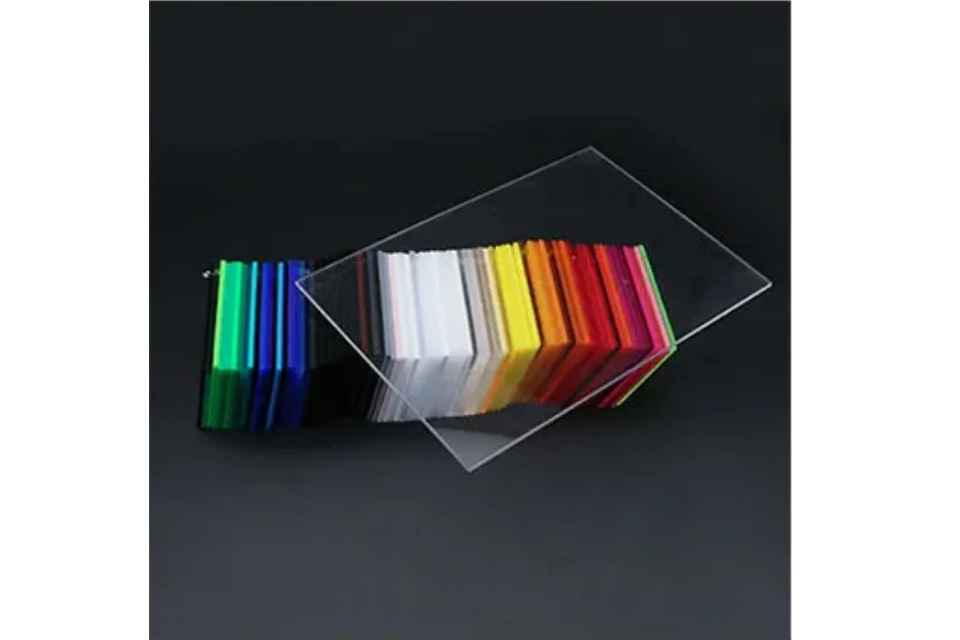
Types of Acrylic Sheets
Acrylic sheets are available in various types, each designed for specific applications and offering unique characteristics. The most common types include cast acrylic, extruded acrylic, and cell-cast acrylic.
Cast Acrylic
Cast acrylic sheets are created through a process known as cell casting, where liquid acrylic polymer is poured into a mold and allowed to cure, resulting in solid sheets with uniform thickness and excellent optical properties. These sheets are renowned for their high clarity, durability, and ease of fabrication, making them suitable for a wide range of applications, including signage, architecture, and automotive uses. Additionally, cast acrylic is lightweight yet highly impact-resistant, making it ideal for environments requiring safety and durability. It also exhibits excellent UV resistance, ensuring that it does not yellow or deteriorate over time, thus making it suitable for both indoor and outdoor applications.
Extruded Acrylic
Extruded acrylic sheets are produced by continuously pushing acrylic mass through a form, resulting in an impact-resistant and heterogeneous product. This type of acrylic is generally more affordable and dimensionally stable than cast acrylic, making it a cost-effective choice for general fabrication and a variety of applications. Due to its malleability and lower melting point, extruded acrylic is well-suited for polishing, cementing, and thermoforming. Like cast acrylic, it is resistant to yellowing from prolonged sun exposure, ensuring longevity despite harsh environmental conditions. Extruded acrylic is commonly used in greenhouse glazing, window installations, and other indoor applications, and it is available in a variety of glossy, matte, and textured finishes to meet diverse design needs.
Cell-Cast Acrylic
Cell-cast acrylic sheets, a variation of cast acrylic, are produced through a similar casting process but offer distinct advantages in terms of optical clarity and consistency in thickness. This type is particularly favored in applications where transparency and durability are critical, such as in sanitary ware like bathtubs and sinks. Cell-cast acrylic’s non-porous surface prevents mold and bacteria growth, contributing to a hygienic environment, while its versatility allows for seamless customization in various shapes and finishes.
Each type of acrylic sheet provides unique benefits that make them suitable for specific applications across diverse industries, reflecting the material’s adaptability and functionality.
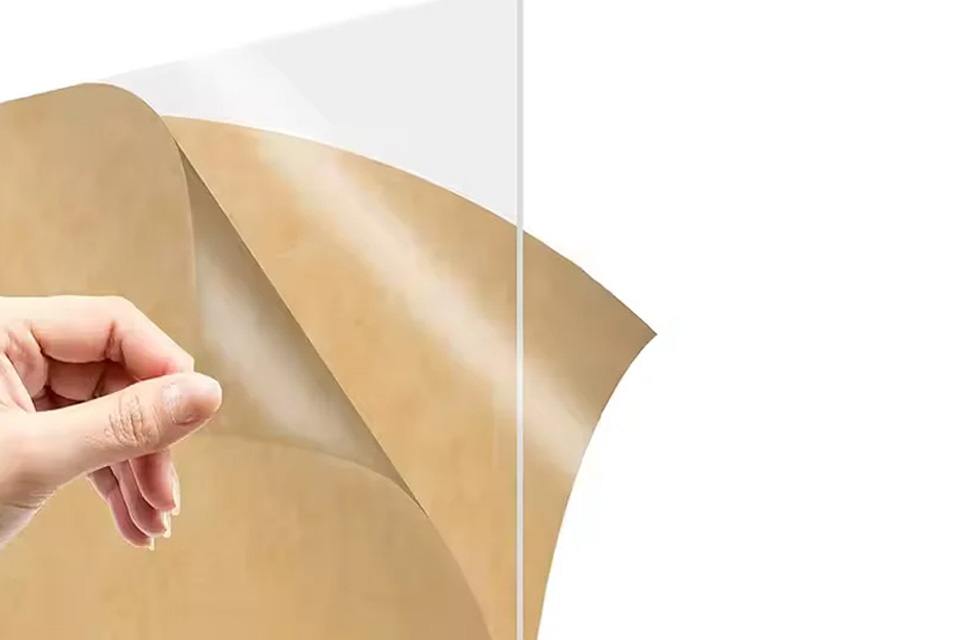
Common Sizes of Acrylic Sheets
Acrylic sheets are available in a variety of standard and custom sizes to meet the needs of different projects. The size chosen typically depends on the specific requirements of the application, as well as considerations for cost-effectiveness and flexibility.
Standard Sizes
Some of the most common standard sizes for acrylic sheets include:
4×8 Feet (1220mm x 2440mm)
The 4×8-foot size is one of the most popular dimensions for acrylic sheets, making it ideal for large-scale projects. This size is frequently used for applications such as wall panels, signage, window coverings, and display boards.
4×6 Feet (1220mm x 1830mm)
Another common dimension is the 4×6-foot sheet, which is also widely available. This size is often suitable for various signage and display solutions, as well as custom-sized windows.
Smaller Sheets (e.g., 2×4 Feet or 3×4 Feet)
For more detailed applications requiring precision cuts, smaller acrylic sheets like the 2×4-foot or 3×4-foot sizes are frequently utilized. These sizes are perfect for DIY projects, small signage, arts and crafts, and protective covers.
Oversized Sheets (e.g., 8×10 Feet, 8×12 Feet)
In contrast, oversized acrylic sheets, such as those measuring 8×10 feet or 8×12 feet, are available for large installations that require substantial coverage.
Custom Sizes
Acrylic sheets can also be custom cut to fit specific project requirements. This flexibility allows for a tailored approach, particularly beneficial for applications needing unique dimensions, such as custom windows, display cases, or decorative elements. Custom-cut acrylic helps to minimize material waste and enhance precision for intricate designs.
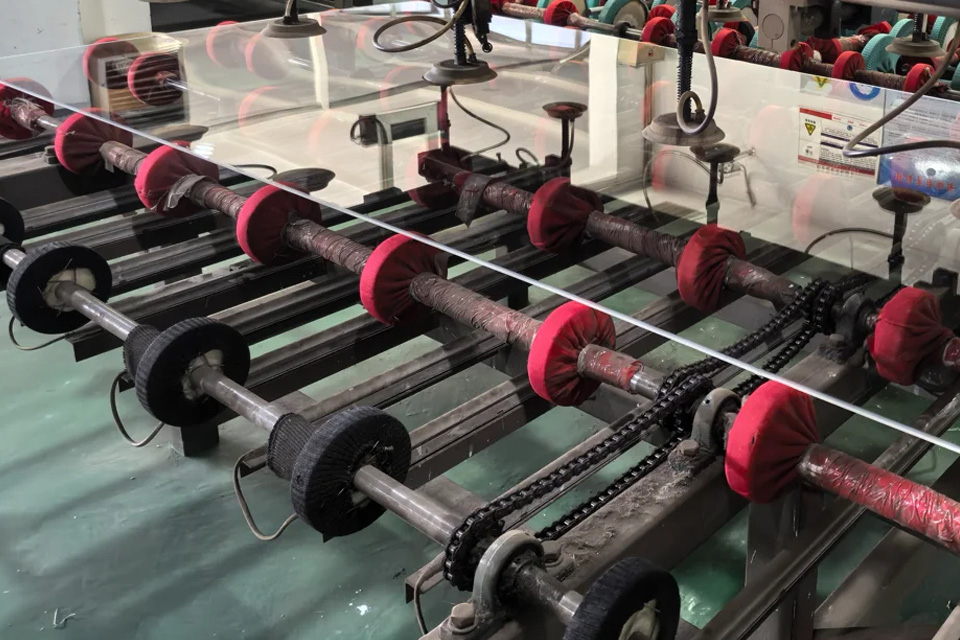
Industry Standards for Acrylic Sheets
Acrylic sheets are manufactured under a variety of industry standards that ensure their quality, safety, and performance across different applications. Key certifications and specifications relevant to acrylic sheets include ASTM standards, ISO guidelines, and NF certifications.
ASTM Standards
The American Society for Testing and Materials (ASTM) provides several standards that acrylic sheets must meet. For instance, ASTM D4802 outlines the manufacturing specifications for Poly(Methyl Methacrylate) acrylic plastic sheets, ensuring criteria related to optical clarity, impact resistance, and defect tolerance are maintained. Furthermore, ASTM standards D6400 and D6868 detail the requirements for labeling plastics as compostable, although these do not specifically address acrylic sheets.
ISO Standards
The International Organization for Standardization (ISO) is also in the process of proposing new standards aimed at improving fire safety and emissions from acrylic sheets, reflecting ongoing advancements in material safety and environmental concerns. These standards are part of a broader initiative to ensure that acrylic sheets not only meet performance requirements but also adhere to safety regulations.
NF Certifications
In Europe, NF certifications, such as NF 116 and NF 017, are crucial for ensuring the quality of acrylic sheets used in sanitary applications. NF 116 certification verifies the performance and durability of acrylic sheets in the manufacture of sanitary appliances like baths and shower trays. This certification process involves regular checks by independent bodies to ensure compliance with established standards. NF 017 certification has been in effect since 1988, providing global manufacturers with recognition for their product quality in sanitary applications.
Compliance and Certification Process
Manufacturers seeking certification for their acrylic sheets typically undergo a rigorous process that includes audits, testing, and compliance verification by independent certification bodies. For example, the Association of Plastic Recyclers (APR) offers a certification scheme for post-consumer recycled content in plastic products, which encompasses acrylic sheets. This program establishes a framework for ensuring traceability and compliance, enhancing the credibility of recycled content in products manufactured from acrylic materials.

Applications of Acrylic Sheets
Acrylic sheets are renowned for their versatility and are utilized across a wide range of industries and applications. Their exceptional clarity, durability, and ease of fabrication make them a preferred material in various fields.
Signage
The signage industry heavily relies on acrylic sheets for both indoor and outdoor applications. Their clarity, weather resistance, and customization capabilities make them ideal for creating effective signage solutions for businesses, institutions, and events.
Retail and Display
In the retail sector, acrylic sheets are commonly used for creating display cases, shelving, and signage due to their lightweight nature and superior impact resistance. They enable businesses to present products attractively while ensuring safety and visibility. Customization options, such as printing and cutting technologies, further enhance their appeal for point-of-purchase (POP) displays.
Automotive Industry
Acrylic sheets are employed in the automotive industry primarily for manufacturing windshields and windows. Their high impact resistance and clarity make them a suitable alternative to traditional glass, contributing to vehicle safety and aesthetics.
Medical Applications
The medical field utilizes acrylic sheets for equipment enclosures and protective barriers. Their durability and ease of cleaning are essential in maintaining hygiene standards within healthcare environments.
Architecture and Interior Design
Acrylic sheets play a significant role in architecture and interior design. They are used in windows, skylights, and various decorative elements, offering aesthetic appeal along with weather resistance. Their ability to be cut, shaped, and colored allows for innovative design solutions.
Catering and Events
In the catering industry, acrylic trays are popular for serving hors d’oeuvres and desserts due to their modern appearance and hygienic qualities. Event designers also use acrylic mirror sheets for tabletops and bars, enhancing the ambiance of various setups.
Industrial Use
In industrial settings, acrylic sheets serve various functions, including machine guards and noise barriers. They provide visibility while protecting workers from moving machinery parts, thus contributing to safer working conditions.
Educational Displays
Acrylic sheets are frequently used in educational settings for creating models and displays. Their durability and visibility make them ideal for showcasing educational materials in an engaging manner.
Factors Influencing Acrylic Sheet Sizes
Acrylic sheets come in a variety of sizes and thicknesses to accommodate different project needs, influenced by several key factors including application requirements, cost considerations, and manufacturing processes.
Manufacturing Processes
The manufacturing methods used to produce acrylic sheets, such as extrusion and casting, further influence their available sizes and characteristics. Extruded acrylic tends to have varying properties depending on the direction of the extrusion, making it suitable for specific applications. On the other hand, cast acrylic, which involves a more labor-intensive process, generally yields a more homogeneous product that is sturdier and offers superior optical clarity, making it ideal for large installations and specialized uses.
Application Requirements
The specific application for which acrylic sheets are intended often dictates their size and thickness. For instance, standard sizes such as 4×8 feet (1220mm x 2440mm) are frequently used in construction, signage, and display solutions due to their suitability for large-scale projects. Smaller sizes, like 4×6 feet, might be chosen for applications that require less surface area. Additionally, the flexibility of acrylic sheeting allows for a range of dimensions, which can be ordered based on the unique specifications of a project, thus enhancing its versatility in various industries such as signage, displays, and construction.
Cost Considerations
Cost also plays a significant role in determining the size of acrylic sheets. Standard sizes are typically more economical and widely available compared to custom dimensions, which may incur additional costs due to bespoke manufacturing processes. Buyers often weigh the benefits of standard sizes against the need for custom cuts, leading to decisions that balance functionality and budget constraints.
Thickness Variability
Acrylic sheets are also available in a wide range of thicknesses, from as thin as 1/25th of an inch to several inches thick, which can significantly impact their application and performance. Thicker sheets are often preferred for demanding environments where durability and strength are critical, while thinner options may suffice for lighter applications.
Handling, Storage, and Disposal Guidelines
Handling Guidelines
When working with acrylic sheets, proper handling is crucial to maintain safety and material integrity. It is important to keep your work area clean and clutter-free, as this minimizes the risk of accidents and ensures better visibility while working. Additionally, monitoring the temperature during heating processes is essential to prevent damage to the acrylic.
Storage Guidelines
Acrylic sheets should be stored in a cool, dry, and well-ventilated area to avoid exposure to extreme temperatures and high humidity, which can compromise the material’s properties. Proper storage not only preserves the quality of the acrylic but also enhances safety during handling.
Disposal Guidelines
The disposal of acrylic waste must be carried out in accordance with local, state, and federal regulations. Unused materials, offcuts, and scraps should be disposed of responsibly to minimize environmental impact. Recycling acrylic waste whenever possible is encouraged, as it helps reduce landfill contributions and supports sustainability efforts.
In some cases, certain acrylic products may be classified as hazardous waste, requiring special handling and disposal methods. It is advisable to check with local Hazardous Waste Collection Centers for guidance on disposal options. Materials such as etching acids, pressurized aerosol cans, and certain toxic pigments should be treated with care due to their hazardous nature.
For individuals or businesses generating significant amounts of waste, it may be necessary to employ a professional hazardous waste disposal service, as regulations can vary depending on the classification of the waste generator and the hazardous characteristics of the waste itself. By adhering to these guidelines, one can contribute to a safer environment while responsibly managing acrylic materials.





